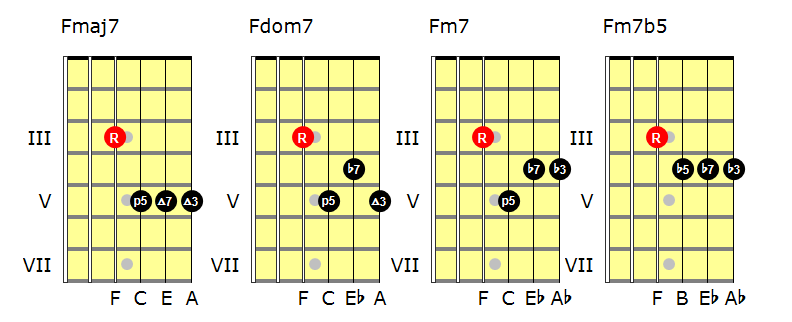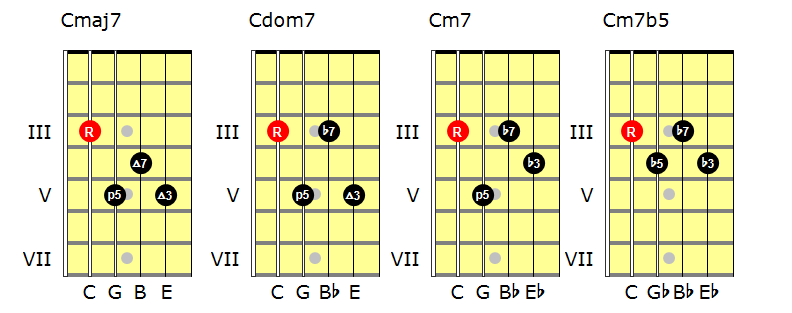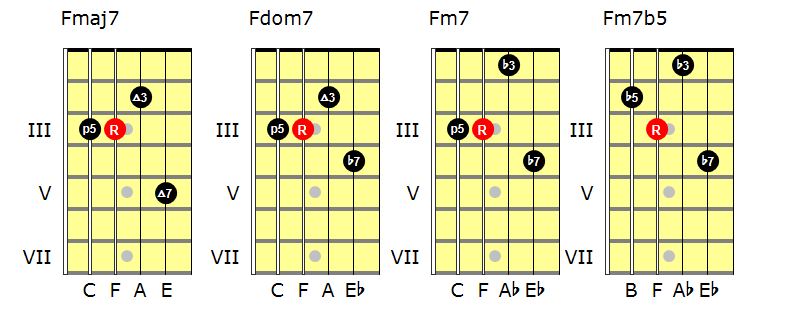Following on from my previous posts about drop 2 voicings it occurred to me that there’s another way of looking at or learning drop 2 voicings. My previous posts provided fingerings for drop 2 chords for each string set and chord type in turn.
This approach is really based on learning each chord type one at a time. A different approach might be to take an initial chord type, for example the major 7, and then change the intervals to derive a different chord type at the same position.
A major 7 chord has the following intervals:
R – 3 – p5 – 7
To change that to a dominant 7 all we need to do is flatten the 7:
R – 3 – p5 – b7
Then to change that to a minor 7 all we need to do is flatten the 3:
R – b3 – p5 – b7
And finally, to derive the minor 7b5 we just need to flatten the 5 (obviously):
R – b3 – b5 – b7
So by focusing on the intervals and changing one note at a time we can derive all the basic drop 2 shapes on a given string set and position on the neck. This is what that sequence might look like:

Here’s another example on another string set:

And of course the same approach will work for voicings that don’t have the root in the bass. Here’s an example with the 5 in the bass:

To wrap up here’s a PDF with the basic drop 2 voicings described this way.
Download “Drop-2-Chords-In-Each-Position.pdf” Drop-2-Chords-In-Each-Position.pdf – Downloaded 2481 times – 202.27 KB